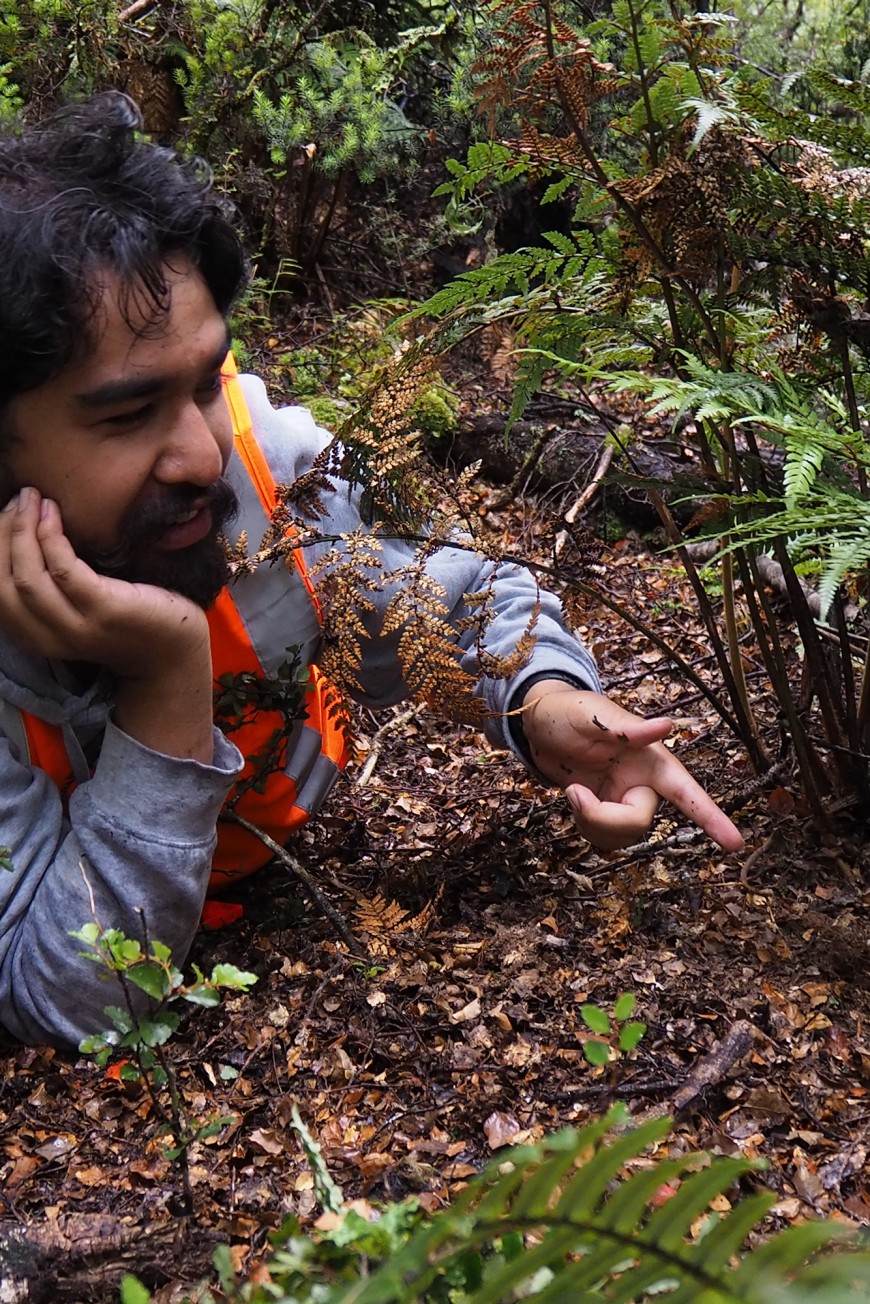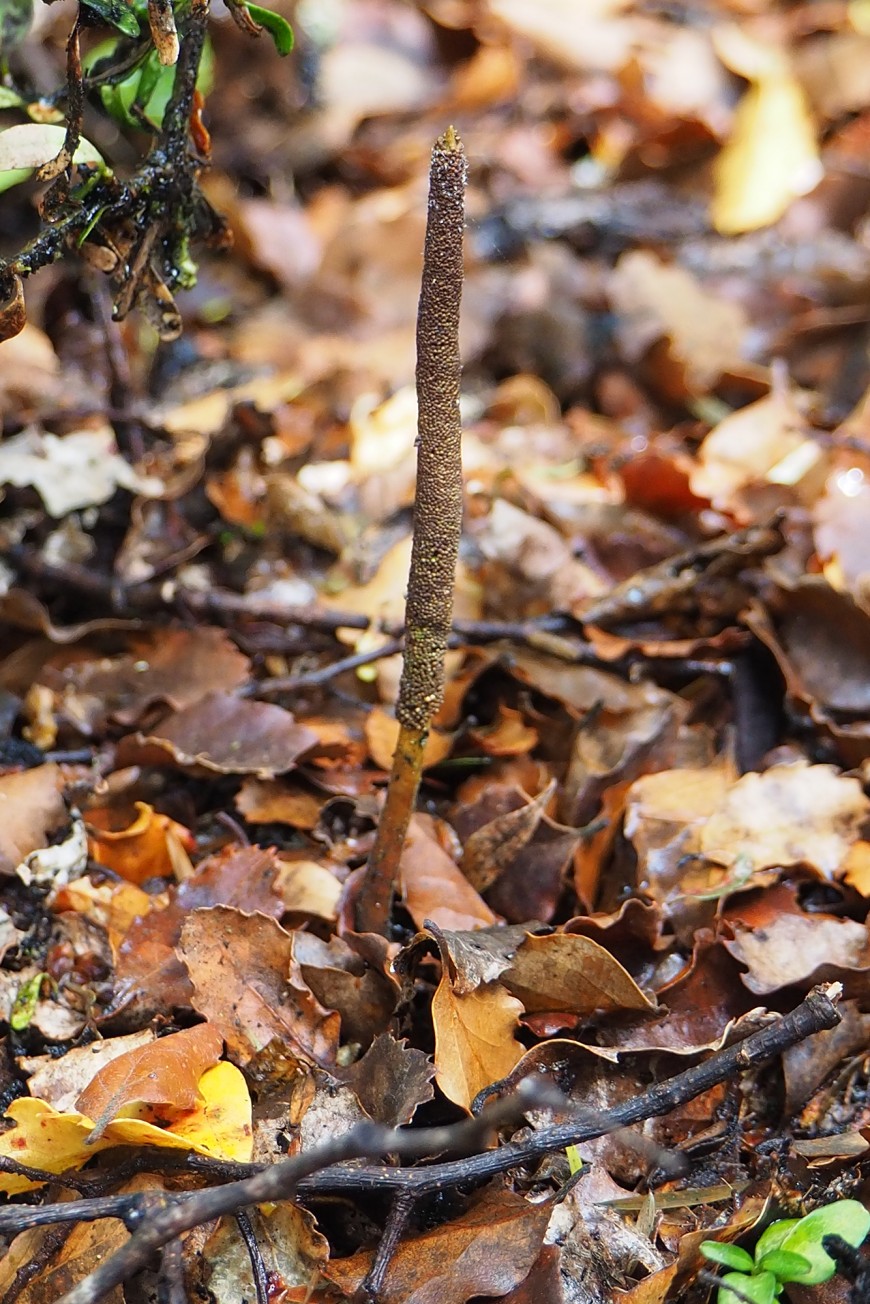Over the past 2 years, Manaaki Whenua researchers led by molecular ecology researcher Dr Eva Biggs with support from Kaihautū Whenua – Māori Research Impact Leader Dr Nikki Harcourt (Ngāti Naho) have worked with TAFT to map the presence of āwheto, a New Zealand native natural structure formed by the fungus Ophiocordyceps robertsii, across their whenua.
The fungus, also known as the vegetable caterpillar fungus, infects caterpillars of the ghost moth species which live underground. The fungus germinates in the larva, killing and mummifying its host. Mātauranga Māori describes how āwheto has been used in the production of ink for tā moko, as well as for rongoā (traditional medicines).
“The initiative looked at finding ways to describe favourable and challenging conditions for the establishment and conservation of āwheto, and then from that we were able to propose long-term protection strategies,” says Eva.
A team that included Manaaki Whenua’s Dr Alex Fergus, Dr Claudia Lange and summer intern Floyd Walker (a chemistry student at Otago University, Ngāti Kahungunu), and Myka Nuku (Ngāti Kahungunu), Leon Collier, and Cara Dee from TAFT was expecting to find around 50 āwehto during the forest mapping but ending up finding over 100. “Alex was the ace at finding these. They look just like a stick on the forest floor, but somehow he managed to spot them everywhere,” says Eva.
As news of the research collaboration with TAFT spread, enquiries have come in from other Māori whānau/hapū and iwi organisations to work with Manaaki Whenua on similar projects to help them reconnect with their own taonga species.
“Understanding the distribution of taonga species across the landscape is useful for landowners because it helps guide decisions about management, and this knowledge empowers kaitiaki,” says Nikki.
“Increasingly, however, Māori partners have expressed interest in understanding how the bioactive properties of indigenous flora and fauna may vary across their landscapes,” she notes.
In response to this aspiration from our Māori partners, Eva and Nikki have developed a research platform dedicated to address this need. “We need to be able to look at native plants and organisms that were traditionally, and are still, being used for medicinal purposes with an ecological and biodiversity focus. We want to be able to empower our Māori partners to be able to know that if they are using something for medicinal purposes we can answer the questions around, the concentration of the bioactives, do the seasons matter, will levels of bioactives be different depending on where in the ngāhere the plant is for instance.”


